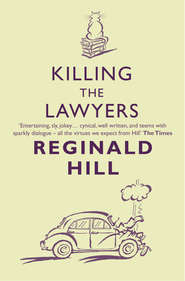По всем вопросам обращайтесь на: info@litportal.ru
(©) 2003-2025.
✖
The Stranger House
Автор
Год написания книги
2018
Настройки чтения
Размер шрифта
Высота строк
Поля
The boy’s age is variously reported as from twelve to sixteen and his origins have been just as widely speculated. Some suggested he was the bastard child of one of the local gentry, kept locked away from public gaze for shame these many years till finally he escaped. Equally popular was the notion that he was a child abducted by the fairies in infancy and returned when puberty rendered him of no further interest to the little people. Some even asserted that he was Robin Goodfellow himself. Such theories at least have the merit of facing up to the supernatural elements of the legend without equivocation.
To my mind the most likely explanation (supported by references to his swarthy colouring and lack of English) is that this youth was in fact a scion of that strange nomadic group misnamedEgyptians who had become increasingly prevalent in Britain during the past hundred years. Perhaps he had been ejected from his tribe because of some fraction of their strange and pagan law. Being young, he was likely to be much more fluent in the Romany tongue than in the English vernacular.
Where all versions agree is that, by taking him in, the Gowders displayed an unwonted degree of Christian charity. Though since somewhat declined, in those days the Gowders of Foulgate were by local standards a well-to-do and powerful family. They were not however famed for their generosity of spirit and their position in the parish seems to have been achieved as much by force of will and arms as agricultural skill.
At the time of our story, the head of the family was Thomas Gowder, a man of about thirty, whose young wife, Jenny, after three years of marriage had yet to provide him with an heir. Also living at Foulgate was Andrew, Thomas’s brother, three years his junior, with his wife and two infant sons.
It is maliciously suggested by some that, in taking the waif boy in, the Gowders were inspired less by charity than the prospect of acquiring an unpaid farmhand. Whatever the truth, they paid dearly for it. After some months of living at Foulgate and being nursed back to health, the youth repaid this kindness one night by assaulting Jenny. On being interrupted by her husband, he wrestled the man to the ground and slit his throat from ear to ear, almost severing the head from theneck. Brother Andrew, hearing the sound of the struggle, called to ask what was amiss, upon which the murderous gypsy seized whatever of value he could lay his hands on and fled.
Drew Gowder roused the village, procured help for his sister-in-law, then got together a posse of villagers to go in pursuit of the fugitive.
It was that time of year when spring though close on the calendar seems an age away on the ground. The night was black, the weather foul, good conditions for an outlaw to make his escape. But the pursuers knew their valley stone by stone while the fugitive was a stranger, driven by guilt and panic. His blundering trail up the fellside above Foulgate was easy to follow and within a very short time they cornered him attempting to hide in Mecklin Shaw, a small oak wood on the edge of Mecklin Moss.
Trapped, he offered no resistance and they would have bound him and taken him back to the village, but Drew Gowder was so inflamed with grief and rage that he demanded summary justice. A blasted oak stood close by, most of it decayed and fallen away, but what remained was the solid bole, its jagged upper edge in silhouette taking the form of a beast’s gaping maw, with the stumps of two branches giving the loose impression of a cross. Pointing to this, Gowder declared that when God provided the means, he was not inclined to reject His bounty. When they understood his meaning, it is to be hoped that some of the others demurred. But Gowder was a strong man, and a deeply wronged man, and it should be remembered that, while the framework of our Common Law was well established, yet in such remote communities as this, the tradition of selfsufficient and local justice was very strong, as indeed it remains to this very day.
So they seized the fugitive murderer and bound him to the blasted tree. At the same time, Gowder had taken himself to a nearby charcoal-burner’s hovel and there gathered several scraps of firehardened wood which he rapidly shaped into small stakes a few inches long. Then, using the haft of his dagger as a hammer, he drove these stakes through the young man’s hands and feet before cutting away the binding ropes, thus leaving him hanging from the tree by those wooden nails alone.
Satisfied with his handiwork, he now led his companions out of the wood and they made their way back to the village, leaving the murderer to die.
That appetite for the macabre still existent in our own day and catered for by the new literature of sensation and the Police Gazette was at its ravening height in an age when our greatest poet could soil his pen with the foulness of Titus Andronicus, and to this we owe the illustrative woodcut of the event reproduced overleaf, which was attached to a broadside ballad allegedly composed by one of the posse.
(Readers of tender stomach are advised not to raise the veiling tissue.)
Recognizing a come-on when she saw one, Sam turned the page and lifted the sheet of almost opaque tissue paper covering the woodcut. It wasn’t pretty, though why one whose profession abounded with images of a man nailed to a cross should have feared that his readers’ sensibilities might be offended she couldn’t understand. Indeed, it wasn’t the crucified man who took the eye, but the representation of the blasted stump to which he was nailed. It was engraved with a vigour that made it look as if its shattered branches were embracing the figure hanging there and drawing into their ripped bark the life that ebbed out of that pierced flesh, while above the executed man the jagged wood metamorphosed into the head of a wolf thrown back to howl in triumph at the moon.
She let the tissue fall and read on.
So far we have a story in which the bare bones of truth are easily detectable. That there was a murder we need not doubt. The grave of Thomas Gowder is still viewable at St Ylf’s, its stela bearing the ambiguous words most foully slain by unknown hand. And after the murder it is certain a hue and cry was raised and a fugitive cornered in Mecklin Shaw where the enraged Andrew took upon himself the roles of jury, judge and executioner. But now matters become mysterious.
During that evening the tale of such events would naturally have circulated widely among thecommunity and early next day the parson of St Ylf’s led a large group of villagers back to Mecklin Shaw to recover the crucified man. We have the parson’s own account of what it was they found, which in fact was nothing, or rather no one. Some stains there were on the blasted oak which might have been human blood, and some holes which might have been made by wooden nails. But of the fugitive murderer’s person, living or dead, they found no trace. Baffled, they returned to the village where neither prayer in the church nor speculation in the ale-house produced any rational solution other than that the man had somehow freed himself and crawled off into the night, only to be consumed by Mecklin Moss which had once, according to tradition, swallowed up whole a horse and cart and the drunken carter who was driving it.
Myself, I think it more probable that Andrew Gowder, as the murderous rage in him declined, began to reflect more coolly on what he had done. As stated supra while certainly the age was more violent than our own, yet this was by no means a lawless time. Such an action as Drew’s, no matter how approved by his neighbours, in the eyes of the guardians of the law would have been judged most culpable, worthy at least of a large fine and religious penance; perhaps the confiscation of land; or even incarceration.
A further incentive to make Drew Gowder view with unease the possible consequences of his actionmay have been, as we learn from another source, the presence in the vicinity at that time of a small posse of soldiers under the direction of Francis Tyrwhitt, the northern agent of that most dreadful of Elizabeth’s pursuivants, Richard Topcliffe, the notorious rackmaster.
Tyrwhitt by all accounts matched his master in zeal and often outdid him in brutality. A Yorkshireman, and first cousin of the Protestant judge, Sir Edward Jolley, famed for passing swingeing sentences on Catholics, he was permitted use of the dungeons of Jolley Castle near Leeds for his interrogations.
Jolley Castle! Can ever an edifice have been less aptly named?
Thwarted in his main purpose by the discovery of nothing but an untenanted priest-hole at Illthwaite Hall, Tyrwhitt might have been ready to take an interest in any other anti-religious practices he chanced on in the district. At the very least he and his posse were a strong visible reminder that even Illthwaite was within reach of the mighty power of the Law.
So what more likely than that Gowder should rise in the middle of the night and return to Mecklin Shaw, perhaps accompanied by a few of his closest confederates, to take down the lifeless body of his victim and hurl it into Mecklin Moss?
A coroner’s report of the period tells us no more than Tom Gowder’s gravestone, viz. that he was murdered by unknown hand. Of the events inMecklin Shaw, no mention is made. How should there be? No body was ever found and no witnesses were forthcoming. Even those (probably very few) who had scruples about what had happened would think twice before offering evidence which would incriminate themselves and draw down the wrath of Andrew Gowder, an even more powerful figure in the community now that he was sole owner of the Gowder farmstead.
However, such a general conspiracy to suppress the truth in public record did but provide fertile ground for the growth of those wild chimerical tales we have been examining here. Worse, the gross mimicry of the passion, death and resurrection of our own Beloved Saviour contained in the most popular version soon led to the blasted oak stump becoming a focus for forms of worship that were blasphemous and pagan. Imitation of the holy by the unholy has always been a feature of devil-worship, and in this instance there was also an ocular encouragement in that it was possible to see in the jagged edge of the trunk a simulacrum of a wolf’s head. The Viking Cross in St Ylf’s churchyard had, as I describe elsewhere, been thrown down by iconoclasts in the 70s. Its sad overthrow probably lent strength to the stories surrounding the stump which soon became known as the Other Wolf-Head Cross. It may also be significant that ‘wolf-head’ was an ancient term for outlaw, dating from the Middle Ages and still in use at this time.
Does this mean that Illthwaite was a centre of diabolism? I think not. I doubt if there were more than one or two benighted souls who adhered wholly to what they called the Old Faith. Yet in remote areas full of stone circles and tumuli and other sites once sacred to the gods of the druids, and the Vikings, and the Romans, it would be surprising if some of these simple peasant folk did not occasionally glance back to the old days when a pair of magpies foretold a death and a full moon was the time for curing warts.
Have I not myself seen devout parishioners making their way up the aisle to partake of Holy Communion in a series of strange hops and skips to avoid standing on the cracks between the flagstones? Such foolish superstitions, bred in the bone, are hard to eradicate but it is best to remove their visible objects, and commands were soon given by the Church authorities for the offending stump to be destroyed while at the same time the toppled cross in the churchyard was to be repaired and reconsecrated.
Like many commands from on high, the order for destruction of the stump proved easier to give than to execute.
The first attempts soon ran into difficulties. Experienced woodmen found their axe-edges blunted. Finally Barnaby Winander, the village blacksmith and a man of prodigious strength, swung at the cross with an axe so heavy none but he could raise it. A contemporary account tells usthat the razor-sharp edge rang against the stump with ‘a note like a passing-bell’, the shaft shattered, and the axe-head flew off and buried itself in the thigh of a fellow worker.
Winander. Had to be one of Thor’s ancestors. Just as the crucifying Gowders had to be the same as the grave-digging Gowders. Nice family. Come to think of it, probably most of the drinkers in the bar had names she’d seen earlier in the churchyard.
Such a sense of continuity in a changing world ought to be comforting.
Somehow it wasn’t.
This approach was abandoned and fire was next essayed with the blacksmith and his family to the fore once more. Faggots of bone-dry kindling were set all around the stump, flame was applied, the Winanders got to work with the bellows they had brought up from their forge, and soon whipped up a huge conflagration. Yet when all had died down and the ashes were raked away, there the stump remained, just as it had been before, except a touch blacker.
Myself, I see in this not the hand of the devil but the hands of men, and in particular of the Winanders. This family, whose scions are still the principal craftsmen of the village, have been of inestimable value down the centuries. Examples of their high skill are to be found everywhere inthe valley. Yet there are two sides to every coin, and it has been frequently remarked in the character of men of genius that their creative sparks fly out of a fiery temperament which can frequently lead them into scrapes. In each generation, the Winanders have bred notorious wild men, ever ready for mischief and pranks and more frequent occupiers of the penitent stool in St Ylf’s than the pew. This Barnaby seems to have been such a one. He could have easily ensured the axes were blunted before being used and the stump was thoroughly soaked with water before the fire with no more motive than a delight in preying on the superstitious fears of his gullible neighbours, and of course a desire to discomfort the parish priest.
Yet it should be pointed out that this Barnaby Winander was the same who undertook the repair and raising of the true Wolf-Head Cross, with what success can be judged by its continued presence in our churchyard these three centuries on.
Finally the stump was hauled out of the ground by a team of six oxen and dragged to Mecklin Moss, which it is recorded opened its dark maw to receive this ill-omened timber like a hungry beast that recognizes the foul meat that best nourishes it.
The other trees of Mecklin Shaw have long since vanished too, victims of the peasant need for timber and the charcoal-burners’ art, and without their constant thirst to drain the soil, the bog land of the Moss has now consumed the ground where they stood. But the legend of the Other Wolf-HeadCross still persists, with three centuries of accretion, fit stuff to while away a winter’s night round the fire in the Stranger House where it may be that it is the tedious repetition of such ancient tales that drives the inn’s reputed ghost to slip out of the nearest door.
A joke! Leave them laughing when you go. Bet his sermons were one long hoot, thought Sam.
Time to go to sleep, but not before the forecast visit to the bathroom which, though still not quite essential, had certainly reached the level of desirable.
Finished, and wondering idly how much of the night some ten-pint men of her acquaintance spent in peeing, she came back out into the gloomy corridor, and stopped in her tracks, all thoughts, idle or not, driven from her mind by what she saw.
The door next to hers, the door to the other guest room, was ajar. A figure was passing through it, slender, silent, clad in black. It paused and the head turned, a dark skull-like outline against the darker dark of the room’s interior. She felt invisible eyes study her. Then it slipped through the gap and the door closed soundlessly behind it.
Memory of Mrs Appledore’s warning about the danger of pursuing the Dark Man came to Sam’s mind, but such things had always been counterproductive. Furious at her fear, she rushed in pursuit, grasped the handle and flung the door open.
Instead of the anticipated darkness, she found the room lit by the ceiling light.
A man wearing black slacks and a black turtleneck was placing a grip on the bed. No ghost, though his hollow cheeks, sallow complexion and shaven head gave him the look of one who’d gone close to the barrier before turning back. Eyes darker than the darkest pure chocolate turned towards her. He didn’t speak.
‘Hi,’ she said. ‘I’m Sam Flood. I’m next door.’
He didn’t answer. She turned away and left.
Back in her own room she looked at herself in the dressing-table glass, her face flushed, her sunbrowned body barely covered by her flimsy Melbourne Uni T-shirt.
I look like I’m on heat! she told herself. What was it I said? Hi. I’m Sam Flood. I’m next door. Jesus!
She checked her door. No lock, just a tiny bolt that didn’t look strong enough to resist a bailiff’s sneeze. Nevertheless she rammed it home and got into bed.
After a while she began to giggle. ‘Hi, I’m next door,’ she said in a breathless little girl Marilyn voice. She choked her giggles into the pillow in case they should penetrate the intervening wall.
And soon sleep brought to an end Samantha Flood’s first day in Illthwaite.











